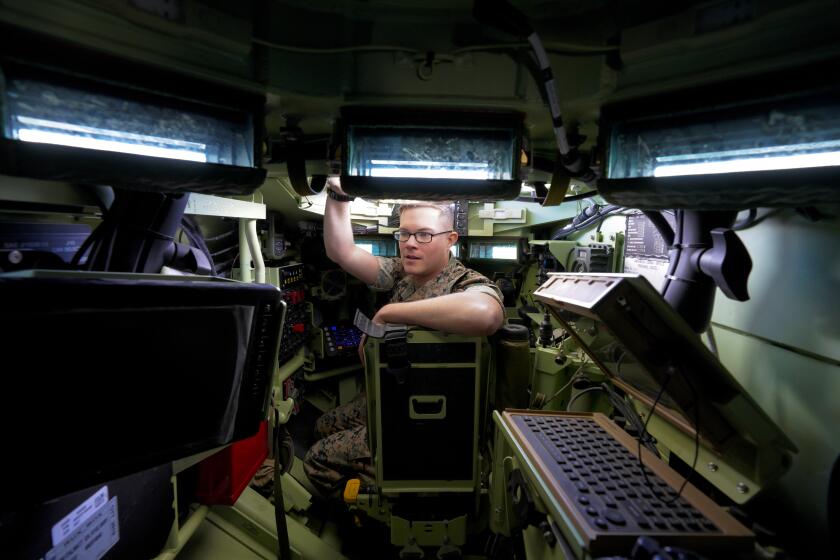Marine Corps inspector general suspended amid probe into deadly AAV sinking last summer
- Share via
SAN DIEGO — The Marine Corps inspector general, Maj. Gen. Robert Castellvi, has been suspended amid an ongoing probe into last summer’s fatal sinking of an assault amphibious vehicle off the coast of San Diego.
Castellvi becomes the highest-ranking officer to face discipline in the ongoing investigations into the disaster, which claimed the lives of nine service members. His suspension was announced by the assistant commandant of the Marine Corps commander in a hearing before the House Armed Services Subcommittee on Readiness on Monday.
Gen. David Berger, the commandant of the Marine Corps, ordered the suspension pending the outcome of the probe, according to a Marine spokesman.
A Marine Corps investigation found the 35-year-old vehicle was in ‘horrible condition’ and its crew not properly trained before embarking, reports say
Castellvi was the commanding general of the Camp Pendleton-based 1st Marine Division until September. He was named in a previous investigation as someone who has some responsibility in the accident, but the Marines did not punish him.
The commanding officers of the 15th Marine Expeditionary Unit and Battalion Landing Team involved in the accident were both relieved of command and seven other Marines faced other administrative or disciplinary actions, the Marines said.
That investigation, which was released last month, was focused on the July 30 incident. A separate investigation is underway looking at the formation of the 15th MEU. The Marines’ first investigation found that the vehicles the battalion landing team brought to the MEU were in poor condition and that Marines did not receive required training that might have helped them escape a sinking vehicle.
The Marines of the landing team were training near San Clemente island with the Marine Expeditionary Unit ahead of its planned deployment. On the morning of July 30, 13 assault amphibious vehicles left the well deck of the amphibious transport dock Somerset to train on the island, about three miles away.
Mechanical issues affected the training mission before it began — one AAV had to stay behind on Somerset due to maintenance problems, according to the Marine Corps’ first investigation.
Problems continued on the island. The Marines were supposed to return to the ship at noon but were delayed when one vehicle broke down. At 5 p.m., nine of the vehicles began the slow cruise back to the Somerset. It wasn’t long before two of those began having issues and returned to the island. The doomed AAV continued toward the ship.
New amphibious armored troop carriers set to replace Vietnam War-era amphibious assault vehicles
A cascade of mechanical and human failures contributed to the deaths of the eight Marines and one sailor, the Marines found. The vehicle’s transmission failed, then its water drive. Water came in through the vehicle’s engine compartment and a leaking headlight. The loss of its transmission meant the vehicle’s bilge pumps could not expel the water as fast as it was coming in.
The vehicle’s commander waited far too long to order those onboard to evacuate, the investigation found. After 45 minutes, another AAV made it to the floundering vehicle, only to bump into it, causing it to tip into a wave which crashed in through its open top hatch. It then sank rapidly, the investigation says.
Carlyle Shelton Jr., a civilian, stepped in as the Corps’ acting inspector general, the Marines said. Castellvi has not been reassigned.
Dyer writes for the San Diego Union-Tribune.
More to Read
Sign up for Essential California
The most important California stories and recommendations in your inbox every morning.
You may occasionally receive promotional content from the Los Angeles Times.












